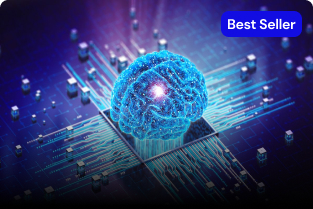Artificial Intelligence (AI) and Machine Learning (ML) are two of the most talked-about technologies of the 21st century. They are often used interchangeably, but while they’re closely connected, they’re not the same thing. Understanding how machine learning fits within the broader concept of AI is key to grasping how modern intelligent systems work.
Let’s break down the relationship between AI and ML, and how the two together are shaping the future of technology.
1. Artificial Intelligence: The Bigger Picture
Artificial Intelligence (AI) is a broad field of computer science focused on creating machines that can perform tasks that typically require human intelligence. These tasks include problem-solving, reasoning, learning, understanding language, recognizing patterns, and making decisions.
In short, AI is about making machines think and act intelligently. It’s the umbrella term under which various technologies, like machine learning, deep learning, and natural language processing (NLP), exist.
2. Machine Learning: A Subset of AI
Machine Learning (ML) is a branch of AI that enables systems to learn from data and improve over time without being explicitly programmed.
In traditional programming, developers write rules for a computer to follow. In ML, however, the system learns patterns and makes predictions or decisions based on data. The more data it processes, the smarter and more accurate it becomes.
For example:
-
AI is the concept of a self-driving car.
-
ML is the part of that system that learns from millions of driving examples to recognize pedestrians, signs, and traffic lights.
3. The Relationship Between AI and ML
The relationship between AI and ML can be understood as “AI is the goal, ML is the means.”
AI aims to build intelligent machines, and ML provides one of the most effective ways to achieve that intelligence.
Here’s how they connect:
-
AI provides the vision — machines that can simulate human intelligence.
-
ML provides the tools and algorithms that make this vision possible.
Without machine learning, AI would rely entirely on predefined logic and rules, making it far less adaptive and intelligent.
4. Real-World Examples of AI and ML Working Together
AI and ML often work hand-in-hand in real-world applications you use every day:
-
Voice Assistants (e.g., Alexa, Siri, Google Assistant): AI powers the conversation flow, while ML learns your speech patterns and preferences.
-
Recommendation Systems (e.g., Netflix, YouTube, Amazon): AI decides what to show, and ML analyzes your behavior to improve recommendations.
-
Email Spam Filters: AI identifies spam emails, and ML continuously improves by learning from new spam patterns.
-
Autonomous Vehicles: AI manages decision-making, and ML enables recognition of surroundings from vast amounts of sensor data.
5. Deep Learning: The Next Level of ML
Within machine learning lies another powerful subset — Deep Learning (DL).
Deep learning uses artificial neural networks (inspired by the human brain) to process vast amounts of data and learn complex patterns. It’s responsible for major AI breakthroughs like image recognition, natural language processing, and self-driving cars.
So, if AI is the goal and ML is the path, deep learning is the advanced engine driving the most intelligent AI systems today.
6. Why the Distinction Matters
Understanding the difference between AI and ML is crucial because it helps in selecting the right technology for the right problem.
-
AI focuses on simulating human reasoning.
-
ML focuses on enabling systems to learn from experience.
Recognizing how they complement each other allows industries to design smarter, more adaptive systems—from healthcare diagnostics to predictive maintenance and financial fraud detection.
Conclusion
Machine learning is not separate from artificial intelligence—it’s an essential part of it. AI is the grand vision of intelligent machines, while ML provides the methods to make that vision real through data-driven learning and improvement.

